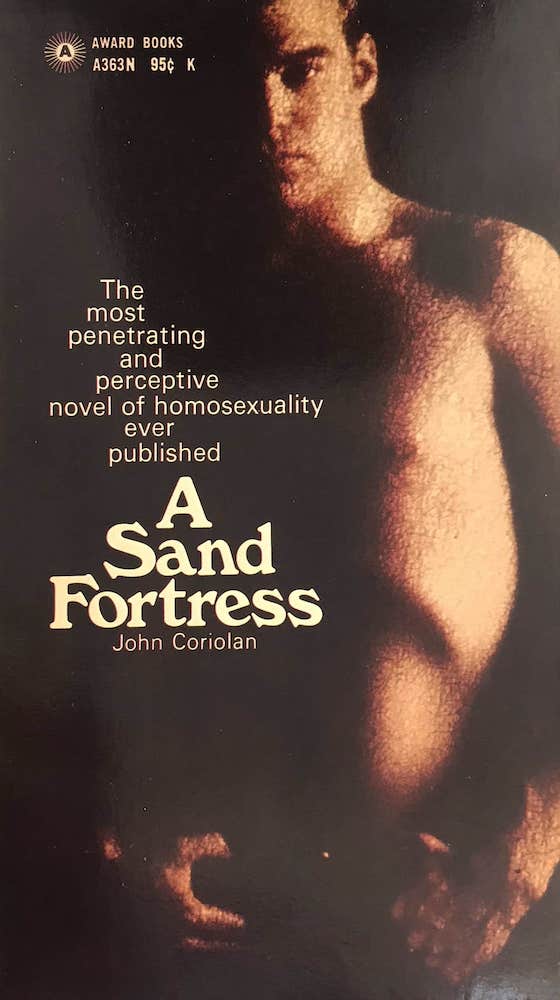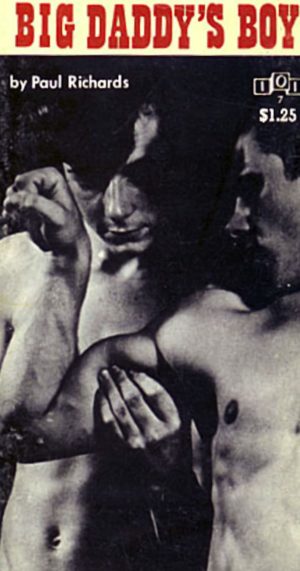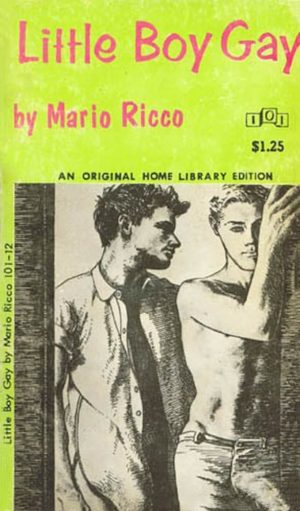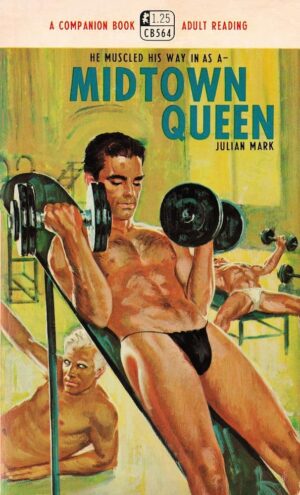A Sand Fortress
Award Books
A363N
John Coriolan
$0.95
A363N A Sand Fortress
A Sand Fortress
Award Books
A363N
John Coriolan
$0.95
Related products
FOREWORD
Recent years have seen a dynamic upheaval of sexual attitudes in the United States and, indeed, throughout the Western world. This upheaval, ramifications of which are being felt today at every stratum of society and which undoubtedly will continue to be felt for decades to come, has been especially apparent in the arts.
Less than twenty years ago, no film-maker would dare show a man and woman together in bed, even if they were fully clothed. Films today feature total nudity {Rosemary’s Baby, Here We Go Round The Mulberry Bush and countless other first-run features, to say nothing of the many dozens of other films whose distribution is restricted to so-called “art” houses), masturbation {The Fox), coitus {The Trip), homosexual relations {Therese And Isabelle, Reflections In A Golden Eye, and The Sergeant) and other subjects once considered very much taboo.
Likewise, no theatrical producer twenty years ago would dream of crossing the sexual barriers which today’s producers cross without hesitation: bare female breasts {Golden Rainbow, The Prime Of Miss Jean Brodie and Scuba Duba), fullfront nudity {Tom Paine and Hair), cunnilingus {The Beard) and homosexuality and other so-called sexual deviations {The Balcony, The Boys In The Band and Futz).
In literature, the change has been even more dramatic; when Norman Mailer wrote The Naked And The Dead in the late 1940’s, he was compelled to disguise (and thus legitimize) a popular four-letter sexual word by spelling it “fug”; other authors, while generally enjoying greater freedom than their fellow playwrights and scenarists, still were not free to explore the full spectrum of man’s sexual behavior candidly and honestly. Today, however, the undisguised version of Mailer’s “fug” appears in mass-circulation magazines (Esquire, among others) and in countless best-selling novels (rare indeed is the best-seller which is not good for at least a few dozen). The only topical limits on an author’s sexual explorations appear to be the limits imposed by his own imagination or paucity thereof (Gore Vidal treats transvestism and transsexualism in his current best-seller, Myra Breckenridge; masochism is explored fully in Pauline Reager’s L’Histoire d’O [The Story of O]; everything from incest to erotolalia is explored in Terry Southern and Mason Hoffenberg’s Candy, and such classics of erotica as Fanny Hill, Lady Chatterley’s Lover, Petronius’ Satyricon, the complete works of Marquis de Sade, Henry Miller’s Tropic Of Cancer, Tropic Of Capricorn and Rosy Crucifixion, plus numerous other works once available only in under-the-counter markets, now are circulated freely in inexpensive paperback editions).
Unfortunately, one of the results of this new-found freedom of expression has been a deluge of works—theatrical, cinematic and literary—which employ sex to titillate rather than to illuminate the human condition or to demonstrate the author’s view of a larger (i.e., suprasexual) problem in human relations. Bookshelves overflow with works whose primary purpose is obviously to make a quick buck, and movie houses and theatres as often as not offer films and plays where sensationalism rather than artistic importance is the main attraction. Thus, when a book, a film or a play comes along where the motives are more artistic than commercial, the occasion is—as the saying used to go—one for rejoicing.
As concerns works dealing with homosexuality, one such occasion was the publication in the late 1950’s of Gore Vidal’s The City And The Pillar; another was the publication in 1963 of John Rechy’s City Of Flight, and a third was the theatrical production in 1968 of Mart Crowley’s The Boys In The Band. The City And The Pillar examined the torments of a young man trying—and eventually failing—to come to grips with his homosexual desires; City Of Night explored the demimonde of the male homosexual prostitute; The Boys In The Band focused on the psychic and emotional ties and conflicts of a group of adult males who have accepted, for better or worse, the homosexual way of life. All three works resisted the temptation to sensationalize, the temptation to play up to an audience’s prurient interests. Instead, each treated its subject matter honestly, candidly and with great sensitivity, compassion and insight. The result was three moving and extremely realistic portrayals of a variety of human beings—not merely a peep-show look at a seldom-seen slice of contemporary American life.
To this list of distinguished works on the theme of homosexuality may now be added John Coriolan’s novel, A Sand Fortress. It deals with the sexual, emotional and personal relationships of three men who inhabit the so-called “gay” world of the late 1960’s. Like any novel which treats homosexuality honestly, it reveals something of the life style of the homosexual community. But, like The City And The Pillar, City Of Night and The Boys In The Band, it is more than just a guided tour of a land foreign to the average reader; it is a penetrating, insightful and meaningful study of people—real people, believable people, people whose lives can lead to a better understanding of all peoples.




Reviews
There are no reviews yet.